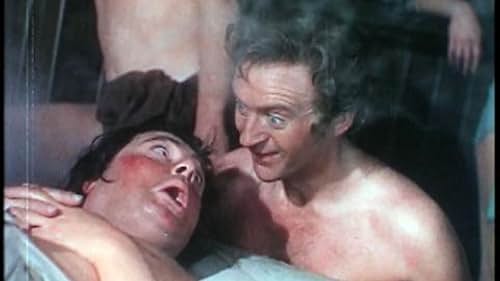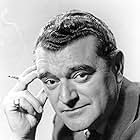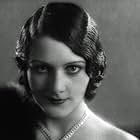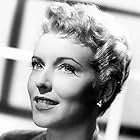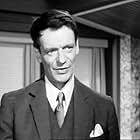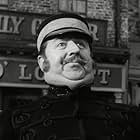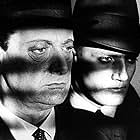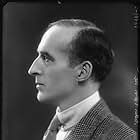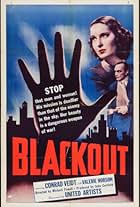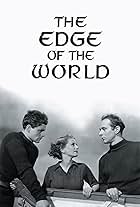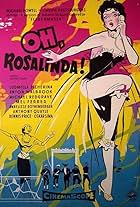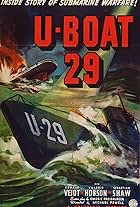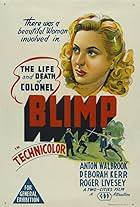IMDb RATING
6.0/10
635
YOUR RATING
A British aristocrat goes in disguise to France to rescue people from The Terror of the guillotine.A British aristocrat goes in disguise to France to rescue people from The Terror of the guillotine.A British aristocrat goes in disguise to France to rescue people from The Terror of the guillotine.
- Awards
- 1 nomination
- Directors
- Writers
- All cast & crew
- Production, box office & more at IMDbPro
Storyline
Did you know
- TriviaDavid Niven was unhappy at being forced to make this film, and later cited this as a reason for severing his contract with Samuel Goldwyn. For a long time Niven had disliked the films he was being cast in by Goldwyn. They had a furious row in which Goldwyn threatened to destroy Niven's career in Hollywood, while Niven accused the producer of making a fortune from him while loaning him cheaply to other film studios.
- Quotes
Prince of Wales: Damn it, Percy! You may be brainless, spineless and useless, but, uh, ha, you do know clothes.
- Alternate versionsBFI Screenonline gives the running time of the British release print as 109 minutes.
- ConnectionsFeatured in Made in England: The Films of Powell and Pressburger (2024)
Featured review
Having recently seen the 1934 Alexander Korda version of "The Scarlet Pimpernel", I found it almost impossible to consider this film other than in relation to its predecessor. It is quite clear in any case that the Powell & Pressburger version is based firmly upon the earlier script rather than upon Baroness Orczy's famous novel "The Scarlet Pimpernel" - or even its sequel, "The Elusive Pimpernel"... Not only do the two films share a number of scenes which have no origin in the novel - the episode of the Prince Regent's coat, Marguerite's own victimisation by the St Cyr family, the firing squad and the ghost, among others - but the dialogue in several of these scenes is word-for-word identical to that of the earlier screenplay.
As such, I consider that the 1950 production may fairly be considered a remake; and like so many remakes of well-known stories, I fear it is not a great success. The changes made for the later production clearly betray nothing more than the advances in cinematography over the intervening years, coupled with what I suspect to have been a bigger budget. In place of blurred sound - the surviving 1934 print is of very poor quality - monochrome film and static, staged studio exteriors, we are treated to Technicolour costumes and numerous location sequences including stately homes on both sides of the Channel, a curricle race on the Brighton road, a full-size sailing vessel and a climax shot on and around Mont St Michel. The action, unfortunately, does not gain thereby. All too often plot elements give the impression of being introduced in order to showcase the lavish production values, rather than the latter enhancing the former.
Neither production is particularly faithful to the original text; but then few great literary adaptations ever are. It is the earlier script, however, for all its occasionally stilted quality, that manages to come closer to the spirit of the novel. Oddly enough, it is where the later script picks up dialogue verbatim, either from its predecessor or direct from the novel, that it generally sounds weakest; out of context, the old dialogue sits ill with the more 'modern' visual style.
Armand St-Just, as a character, is reduced to an unappealing cameo that deprives Marguerite's later actions in his defence of their essential emotional force - the audience has no reason to care about his fate. Likewise, we lose the poignant moment introduced by Korda's script where Sir Percy allows the mask of marital indifference to slip a fraction in the face of Marguerite's unspoken distress, only for her to shut him out from her confidence and resort instead to Chauvelin's devil's bargain - with almost fatal consequences for both of them.
Despite its longer running-time, the remake also contrives to lose many of the effective 'character scenes' that set the mood of the piece; the aristocrats being called out one by one to the tumbrils; Armand's relationship with his sister; the prattle of the bored ladies of fashion as Marguerite poses for her portrait; the affected, artificial attitudes of the circles in which her husband moves; the baffled Chauvelin and the sleeping Sir Percy; and even revolutionary Calais in a snatched peaceful moment, as seen by the 'soldiers' in disguise. As a result, shorn of all this even the main characters seem strangely two-dimensional, and the moments of subtle humour are almost totally lost in favour of a few bald gags towards the end - although the introduction of the unloaded pistol with which Sir Percy so carefully induces his adversary to arm himself is a nice touch.
But most crucially of all, David Niven, who should have been no novice in the art of buckling his swash, totally fails to outshine the memory of Leslie Howard's performance in the part of the actual Scarlet Pimpernel. It is chiefly Howard's portrayal of the title character that raises "The Scarlet Pimpernel" somewhat above the status of dated period piece it would otherwise hold. 'Fair and foolish', he carries off Sir Percy Blakeney to perfection as an eighteenth-century Lord Peter Wimsey, a babbling silly-ass-about-town in public but a quick-witted and resourceful man of action when it counts. Admittedly the script does Niven no favours; but he is neither convincingly languid in the part of the fop (the doggerel scene in the steam-bath, transposed from its original setting in a hide-bound gentlemen's club, becomes simply embarrassing, with Niven popping up through the steam like a pantomime demon) nor sufficiently dashing in his other role. This is simply not a Scarlet Pimpernel that female viewers can hero-worship, or male viewers long to emulate. And sad to say, Niven doesn't really have the looks for the part.
Merle Oberon's quick-tongued and imperious Lady Blakeney was also more appropriate to her part than Margaret Leighton's more colourless blonde rendition, although again the script must take much of the blame. As for the appalling French accents inflicted on Marguerite, Chauvelin, and every other Francophone character in the film... one becomes almost grateful for the frequency with which Margaret Leighton, at least, forgets to maintain hers.
"The Scarlet Pimpernel" was a minor historical drama, mainly notable for an outstanding performance from Leslie Howard. "The Elusive Pimpernel", on the other hand, ranks alongside the 1970s remake of "The Mark of Zorro" - that is, despite added colour and action sequences, somewhere along the line they have managed to lose the essential heart of the story. This version was supposedly planned as a musical - the mind boggles!
As such, I consider that the 1950 production may fairly be considered a remake; and like so many remakes of well-known stories, I fear it is not a great success. The changes made for the later production clearly betray nothing more than the advances in cinematography over the intervening years, coupled with what I suspect to have been a bigger budget. In place of blurred sound - the surviving 1934 print is of very poor quality - monochrome film and static, staged studio exteriors, we are treated to Technicolour costumes and numerous location sequences including stately homes on both sides of the Channel, a curricle race on the Brighton road, a full-size sailing vessel and a climax shot on and around Mont St Michel. The action, unfortunately, does not gain thereby. All too often plot elements give the impression of being introduced in order to showcase the lavish production values, rather than the latter enhancing the former.
Neither production is particularly faithful to the original text; but then few great literary adaptations ever are. It is the earlier script, however, for all its occasionally stilted quality, that manages to come closer to the spirit of the novel. Oddly enough, it is where the later script picks up dialogue verbatim, either from its predecessor or direct from the novel, that it generally sounds weakest; out of context, the old dialogue sits ill with the more 'modern' visual style.
Armand St-Just, as a character, is reduced to an unappealing cameo that deprives Marguerite's later actions in his defence of their essential emotional force - the audience has no reason to care about his fate. Likewise, we lose the poignant moment introduced by Korda's script where Sir Percy allows the mask of marital indifference to slip a fraction in the face of Marguerite's unspoken distress, only for her to shut him out from her confidence and resort instead to Chauvelin's devil's bargain - with almost fatal consequences for both of them.
Despite its longer running-time, the remake also contrives to lose many of the effective 'character scenes' that set the mood of the piece; the aristocrats being called out one by one to the tumbrils; Armand's relationship with his sister; the prattle of the bored ladies of fashion as Marguerite poses for her portrait; the affected, artificial attitudes of the circles in which her husband moves; the baffled Chauvelin and the sleeping Sir Percy; and even revolutionary Calais in a snatched peaceful moment, as seen by the 'soldiers' in disguise. As a result, shorn of all this even the main characters seem strangely two-dimensional, and the moments of subtle humour are almost totally lost in favour of a few bald gags towards the end - although the introduction of the unloaded pistol with which Sir Percy so carefully induces his adversary to arm himself is a nice touch.
But most crucially of all, David Niven, who should have been no novice in the art of buckling his swash, totally fails to outshine the memory of Leslie Howard's performance in the part of the actual Scarlet Pimpernel. It is chiefly Howard's portrayal of the title character that raises "The Scarlet Pimpernel" somewhat above the status of dated period piece it would otherwise hold. 'Fair and foolish', he carries off Sir Percy Blakeney to perfection as an eighteenth-century Lord Peter Wimsey, a babbling silly-ass-about-town in public but a quick-witted and resourceful man of action when it counts. Admittedly the script does Niven no favours; but he is neither convincingly languid in the part of the fop (the doggerel scene in the steam-bath, transposed from its original setting in a hide-bound gentlemen's club, becomes simply embarrassing, with Niven popping up through the steam like a pantomime demon) nor sufficiently dashing in his other role. This is simply not a Scarlet Pimpernel that female viewers can hero-worship, or male viewers long to emulate. And sad to say, Niven doesn't really have the looks for the part.
Merle Oberon's quick-tongued and imperious Lady Blakeney was also more appropriate to her part than Margaret Leighton's more colourless blonde rendition, although again the script must take much of the blame. As for the appalling French accents inflicted on Marguerite, Chauvelin, and every other Francophone character in the film... one becomes almost grateful for the frequency with which Margaret Leighton, at least, forgets to maintain hers.
"The Scarlet Pimpernel" was a minor historical drama, mainly notable for an outstanding performance from Leslie Howard. "The Elusive Pimpernel", on the other hand, ranks alongside the 1970s remake of "The Mark of Zorro" - that is, despite added colour and action sequences, somewhere along the line they have managed to lose the essential heart of the story. This version was supposedly planned as a musical - the mind boggles!
- Igenlode Wordsmith
- Apr 3, 2002
- Permalink
Details
- Release date
- Country of origin
- Languages
- Also known as
- Das dunkelrote Siegel
- Filming locations
- 2 Royal Crescent, Bath, Somerset, England, UK(Lady Grenville ball)
- Production companies
- See more company credits at IMDbPro
- Runtime1 hour 28 minutes
- Aspect ratio
- 1.37 : 1
Contribute to this page
Suggest an edit or add missing content

Top Gap
By what name was The Fighting Pimpernel (1949) officially released in India in English?
Answer
